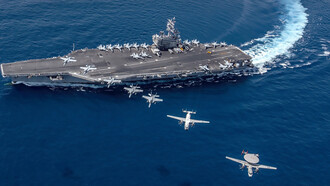In 2010, no one would have thought the Arab Spring would eventuate into a war spanning over a decade in Syria. The conflict began with hope for democracy but instead, has grown into one of the worst human rights crises in contemporary history.
It is estimated that approximately 13.4 million Syrians are in need of humanitarian assistance and that 6.7 million have flooded into neighbouring countries seeking refuge and asylum.1 The situation is often referred to as the world’s war because it has destabilised the Middle East and changed international law.2
Conflict exists within the conflict – it is not a typical civil war. The Assad Government is fighting the Free Syrian Army, Al Qaeda and the Islamic State of Iraq and Syria (ISIS).2 ISIS and Al Qaeda joined forces and are fighting the Assad Government, the Kurdish and the Free Syrian Army. 2 The Syrian democratic forces together with the Kurdish armed forces are fighting Al Qaeda and ISIS.2 Turkey is fighting the Kurdish forces while the Kurdish forces are being supported by the United States in their attempt to fight Al Qaeda and ISIS.2 Iran, Jordan, Russia, China, Saudi Arabia, the United States, the British and Turkish are all suspected to be providing weapons and financial support to the various groups fighting within Syria’s borders with a view to progressing their own political interests.2
Internally, the Assad government has been committing horrendous crimes such as dropping barrel bombs containing chemical weapons on civilians.3 At the same time, ISIS has been terrorising civilians with public beheadings, massacres, torture and sexual enslavement.4 From an international law and international relations perspective, the situation raises a number of serious questions; the most important being ‘What happened to the international community’s commitment to Responsibility to Protect (R2P)?’
It is an important issue to stop and consider because a blatant failure of its implementation raises serious concerns in the context of fundamental principles of international law and human rights.
This article briefly provides an overview of the doctrine of R2P and examines the reasons underpinning its introduction. It also explores mechanisms available to facilitate R2P and scrutinizes why it has not been used in the case of Syria.
While R2P has not been enforced in the context of Syria, the international community should work together to address the barriers that have prevented it from being effectively implemented.
Principles of international law
To fully understand R2P and explore why it has failed in the case of Syria, a basic understanding of some fundamental principles of international law and human rights/ humanitarian law is first required. Given this, it is helpful to briefly visit a few concepts; State Sovereignty, Non-interference, Self Defence and Responsibility to Protect.
State sovereignty, non-interference and self-defense
Broadly speaking, State sovereignty is one of the most prominent legal concepts which influences relations between States and the conduct of international organizations. It is a fundamental building block of international law and refers to a recognised State’s ability and right to act independently, without external interference in terms of its governance, law and policy-making provided other international laws are upheld and respected.5
Non-interference is closely linked to the notion of State Sovereignty - it identifies that external forces should not interfere with the domestic affairs of a recognised State.6
Self-defence refers to a State’s right to defend itself from external interference or respond to an attack from an external force. These terms are principles of customary international law and set the parameters for relations among States and within the international community. These principles are enshrined in the UN Charter in Articles 2(4), 2(7), 39, 41 and 42.7
R2P - clarifying tensions in international law
R2P was essentially developed as a check and balance to ensure the international community can intervene when mass atrocities are imminent or occurring; it clarifies instances when the emphasis should be placed on human rights and humanitarian law rather than State sovereignty and non-interference.
In essence, it puts conditions on a State’s sovereignty and permits interference by the international community when a State commits mass atrocities against its citizens or is unable for any other reason to protect its citizens from harm.
The R2P concept came about in response to the events of the 1990s which unfolded in the Balkans, Somalia and Rwanda.8 The international community’s failure to act in these instances resulted in the inhumane treatment of many, racial cleansing and mass genocide.8
At the time the atrocities were occurring, the international community and United Nations Security Council (SC) speculated over their ability and authority to intervene. They were concerned that such action would equate to their own violation of international law.7 They took a conservative stance in interpreting Article 39 under Chapter VII of the UN Charter and only considered it to permit military intervention in accordance with Articles 41 and 42 where international peace and security were threatened due to threats to peace, breaches of the peace or acts of aggression. 7
Significant questions arose regarding the scope and breadth of the relevant provisions within the UN Charter.8 Another major point of contention was whether authorising humanitarian intervention under Chapter VII of the UN Charter and essentially broadening the scope of Article 39 could open a pandora's box by enabling powerful States to abuse weaker, smaller States.9
Canada instigated the International Commission on Intervention and State Sovereignty (ICISS) in 2001. 10 Doing so resulted in a significant discussion about appropriate limits to non-interference and Sovereignty and potential mechanisms that could be introduced to form part of the established legal framework to ensure intervention could occur in situations where human rights and humanitarian law were obviously being violated.
The challenge before the Commission was determining how such provisions could exist whilst also respecting the principles of sovereignty and non-interference.10 After significant deliberation, the R2P doctrine was developed.
R2P doctrine
R2P is explored in detail in the 2001 Report11 prepared by the ICISS. It comprises 3 essential elements; the responsibility to prevent, react and rebuild.11 In 2005 UN member states unanimously adopted a resolution which set the parameters for R2P at the UN World Summit.12 Specifically, paragraphs 138 and 139 of the 2005 World Summit Outcome Document identify that UN member states have a responsibility to protect populations from genocide, war crimes, crimes against humanity and ethnic cleansing and also highlight the manner in which action ought to be taken if these situations occur.12
The UN’s 2009 report, Implementing the Responsibility to Protect, elaborated on the elements and established the following three pillars:13
- Pillar one – States must protect their populations from genocide, war crimes, ethnic cleansing and crimes against humanity.
- Pillar two – The international community is responsible to encourage and assist States in relation to pillar one and is able to use appropriate peaceful means including political, diplomatic, humanitarian and any other means that may be helpful.
- Pillar three – If a State is not able to or fails to protect its population, the international community must be prepared to take collective action to address the situation in accordance with the UN Charter and in a timely manner.
The SC was identified as being the most appropriate body to authorize military intervention in circumstances where R2P was to be applied.13 Significantly, the 2001 ICISS report requires the SC to ‘deal promptly with any request for authority to intervene where there are allegations of large-scale loss of human life or ethnic cleansing’ once such facts have been adequately verified. It also states:
The permanent five members of the Security Council should agree not to apply their veto power in matters where their vital state interests are not involved, to obstruct the passage of resolutions authorising military intervention for human protection purposes for which there is otherwise majority support 13 Although the R2P doctrine is not legally binding, its foundations lay in other international legal documents including the UN Charter, the Geneva Convention and the Statute of the International Criminal Court.8 As such, it can be thought of a political agreement or soft law that clarifies aspects of the existing legal framework.8 It does not impose any legal obligation on the international community.
R2P in the case of Syria
While R2P was successfully applied in Libya, there is currently significant speculation that its lack of application in Syria effectively renders it dead.14,15 It is well known that the Assad Government has committed numerous violations of human rights and mass atrocities against its own citizens whilst also failing to protect them against rebel groups and various other external State and non-State actors.2 It is also no secret that civilians are being targeted in attacks as the Government fights various rebel groups and that kidnappings and torture are being carried out by both the government and various other participants in the conflict.2 Humanitarian issues have arisen such as the destruction of hospitals and the mistreatment of prisoners of war.16
Despite being completely aware of the events unfolding, the international community and SC have ultimately failed to intervene using R2P.14 The most alarming situation to completely undermine the R2P doctrine occurred in 2013 - while almost all States and the SC have generally conceded that the use of chemical and biological warfare is an intolerable offence, the intervention did not occur when the Assad government attacked civilians and rebel groups via such means in August 2013.2 Obama, who at that time was the President of the United States, had publicly declared months earlier that he would not tolerate such an atrocious crime being committed however, the moment it occurred, the US hesitated and refused to act.17 Today, the Syrian conflict is in its second decade; the United Nations has stopped attempting to keep track of the number of civilian deaths and there is no end to the war in sight. 17
World politics and R2P
A key criticism of the R2P doctrine is that it is utopian by nature – it ignores the fact that the world is heavily vested in politics.16 This is very evident in examining why R2P has not been used in the case of Syria.14 Military intervention for human protection purposes can be authorised by the UN SC and the General Assembly. The SC is preferable to the General Assembly because the General Assembly requires the support of two-thirds of the UN member states.2 By contrast, a draft resolution before the SC can (hypothetically) be passed much easier.
Unfortunately, the SC is heavily impacted by power politics as a consequence of its structure. In brief, it is made up of five permanent members; the United States, the United Kingdom, Russia, France and China. They are collectively known as the P5 and each of them has the ability under Article 27 of the UN Charter to veto a draft resolution put before the Council and preclude its progress.18 The effectiveness and substance of the SC are often scrutinised due to this operational issue and it has never been more disastrous than in the case of Syria.18
The events which have unfolded have given serious rise to discussions about reforming the veto power.14 Specifically, scholars argue the veto power should not apply in relation to resolutions relating to the four major human rights issues.19 The imposition of such a limitation could potentially prevent power politics from interfering with important R2P decisions.
This issue is a serious concern as over the last decade Russia, who has historically been an ally of Syria, has consistently blocked the SC from passing draft resolutions to enable human rights and humanitarian intervention. Additionally, Assad is being supported by China at the SC in its ongoing fight for survival.16
There is a clear division amongst the international community regarding how the situation should unfold. Sovereignty, non-interference and human rights are not the only matters influencing how the Syrian conflict is unfolding.20 Most interestingly, Russia argues it is blocking the draft resolution because it is concerned the fall of Assad will result in more bloodshed and chaos.20 It is becoming increasingly clear that the Syrian war is a product of multiple world powers competing for access to Syria’s natural resources rather than democracy or religion.16
The war is compromising national interests, international law and regional peace and stability – and unfortunately, R2P is quickly becoming little more than a theoretical construct in the face of this devastation.16 Syrian lives are being compromised due to the competing interests of the world's power players.2
While the doctrine of R2P has come a long way and had some previous success in terms of its application, it has been of little to no benefit in the case of Syria.14 It is important to recognise that the Syrian conflict has indeed altered international law in numerous ways and given rise to issues that have never been dealt with before.20 However, it is baffling and completely outrageous that R2P has not been applied in Syria due to power politics and misuse of the veto power.
The barriers to R2P’s implementation need to be closely considered and addressed with a view to enhancing the doctrine. One clear issue that needs to be resolved immediately is how the misuse of the veto power can be prevented.16 Altering the mechanisms used to facilitate intervention is of paramount importance.14
It is devastating that the international community is aware of the atrocities occurring in Syria but politics and legal issues are standing in the way of a resolution and intervention. Rather than abandoning R2P completely because of its ineffectiveness in the context of Syria, the international community should work together to remove barriers to its application and ensure human rights are prioritised above the political and economic interests of the P5.
References
1 Global Centre for the Responsibility to Protect ‘Syria:13 million people still displaced’ 1 September 2021.
2 Asser Institute ‘How the Syrian Conflict Has Changed International Law’ 11 June 2020.
3 Hudson John U.N Envoy Rises Syria Death Toll to 400,000’ Foreign Policy 22 April 2016.
4 Aljazeera ‘UN: ISIL Committing War Crimes in Syria’ 14 November 2014.
5 Besson Samantha ‘Sovereignty’ Oxford Public International Law April 2011.
6 Naigen Zhang ‘The Principle of Non-interference and its application in Practices of Contemporary International Law’ Fudan Journal of the Humanities and Social Sciences 9, 449–464 (2016) 9 May 2016.
7 Hoffmann Julia and Nollkaemper Andre ‘Responsibility to Protect: from Principle to Practice’ Amsterdam University Press.
8 Halt Brad ‘The Legal Character of R2P and the UN Charter’ e-international relations 8 August 2012.
9 International Commission on Intervention and State Sovereignty ‘The Responsibility to Protect: Report of the International Commission on Intervention and State Sovereignty’ International Development Research Centre, December 2001.
10 Jovanovic Miograg ’Responsibility to Protect and the International Rule of Law’ Oxford University Press 13 October 2015.
11 International Commission on Intervention and State Sovereignty.
12 Global Centre for the Responsibility to Protect United Nations General Assembly 2005 World Summit Outcome A/60/L.1’ 24 October 2005.
13 United Nations General Assembly ‘Implementing the Responsibility to Protect: Report of the Secretary General’ UNGAOR, 63rd ses, Agenda items 44 and 107, UN Doc A/63/677 (12 January 2009).
14 Adams Simon ‘Libya and the Responsibility to Protect’ Global Centre for the Responsibility to Protect Occasional Paper Series No.3 October 2021.
15 Kuperman Alan ‘R2P: Catchy Name for a Fading Norm’ Ethnopolitics, 10, 1, 125 – 128, March 2011.
16 Nasser- Eddine ‘How R2P failed Syria’ Flinders Journal of History and Politics, 28, 16-30
’Responsibility to Protect- United Nations Torino Retreat 2008’ International Journal of Refugee Law 20, 4 (2008): 710-714.
17 Al-Oraibi Mina ‘Responsibility to Protect is One More Casualty of the Syrian War’ Foreign Policy 14 June 2021.
18 Center for UN Reform Education ‘The Veto and the UN Security Council’ 28 October 2019.
19 Center for UN Reform Education.
20 Rossi Michael ‘Introduction to the UN06: Humanitarian intervention and the responsibility to protect’ Department of Political Science Program in International Relations 28 February 2021.















